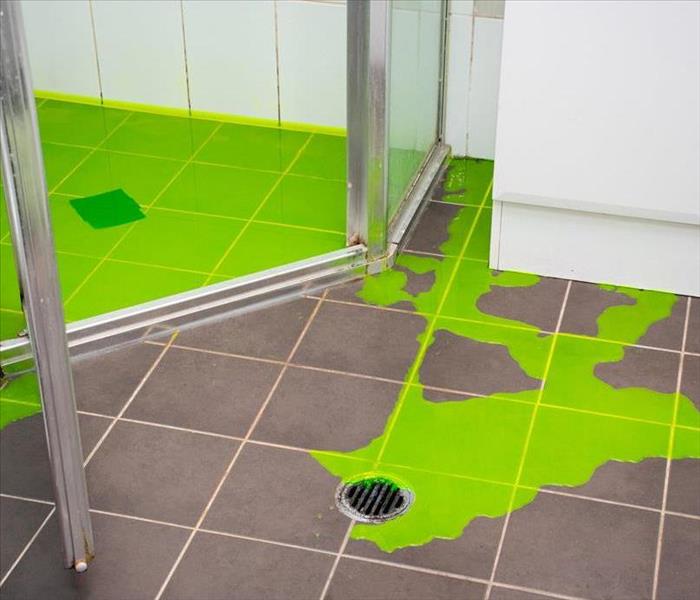What You Should Know About Detecting a Shower or Bathtub Leak
4/11/2022 (Permalink)
As a good homeowner, you want to do whatever you can to maintain your house and keep it in the best condition possible. After all, your house is one of the biggest investments you’ll make. You want it to maintain its value as a place that you love coming home to.
Taking care of your home in Emporia, VA, means regularly inspecting it for damage and other signs of wear and tear. A small problem like a leaky pipe can lead to bigger issues if left unaddressed. Water damage from an undected shower or bathtub leak could result in you needing to call a provider of residential restoration services.
Detecting a Bathtub or Shower Pan Leak
While a puddle on the floor or the telltale dripping sound are obvious signs of a problem, you should also look for the following signs:
- Cracks in the grout around the rim of a tub or edge of the shower
- Loose tiles or flooring in the vicinity
- The appearance of mold on the floor or wall nearby
- A white, chalky film on wood surfaces
- Water stains in the ceiling of the floor below or basement
If there’s evidence of a leak, you need to determine its source.
Finding the Source
Conduct these tests to determine the source of the leak in your bathroom:
Shower pan: A shower pan leak often occurs when there is a crack. To check, allow the shower to dry completely. Completely cover the drain or plug and use several buckets to fill the shower up to its threshold. Depending on the severity of the leak, you should see water marks on the ceiling below in as little as 15 minutes or up to several hours later.
Tiles: Water can seep through damaged grout into the floor or wall. Inspect the areas near your tub or shower for loose tiles or cracks in the grout. Soaking walls and checking for seepage may reveal your leak.
Fixtures: The faucet on your tub or a showerhead may be the source. A clogged showerhead or a lack of a tight seal between the showerhead or faucet and the place is attached may be the root of a problem. Take a close look at how your fixtures are attached.
Drains: An improperly sealed drain cannot stop water from seeping outside. If you can see the drain under your shower or tub via an access panel, observe what happens after you release water that’s been plugged.
Splash: Leaks around a shower door or curtain gaps may result from splashing. Check your door or the edges of your curtain for gaps, especially when the water is running. This could be the source of your shower or bathtub leak.
Determining the source of your leak is a major step in reaching a solution. If you see evidence of water damage, it’s best to consult professionals for cleanup, restoration, and repairs.
Checking for water damage from a shower or bathtub leak should be a regular part of your home maintenance approach. Finding the problem early can help avoid serious problems in the long run. Being a responsible homeowner means staying on top of your property and issues that arise.




 24/7 Emergency Service
24/7 Emergency Service
